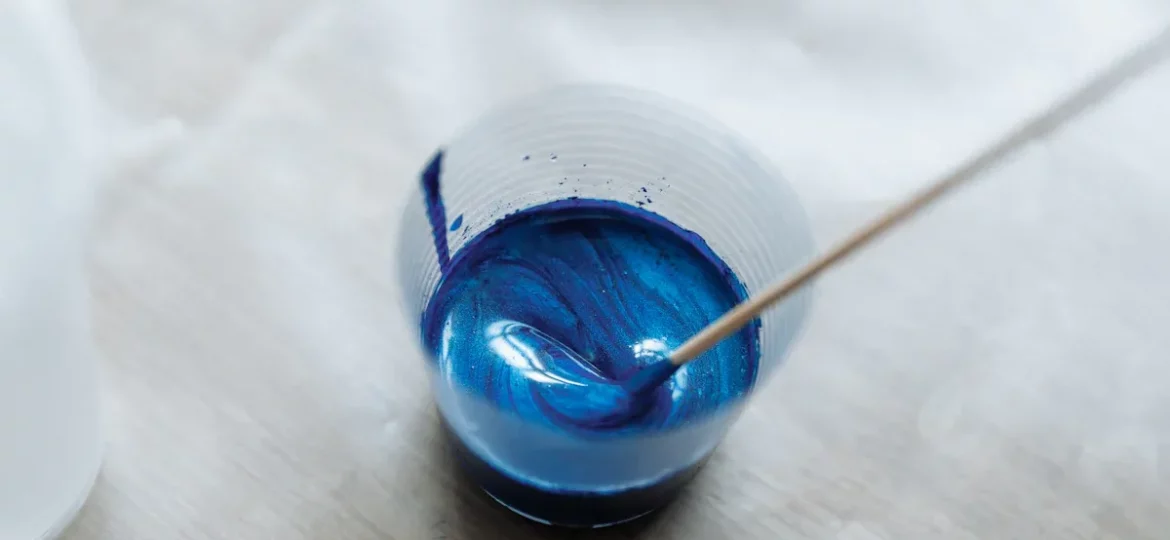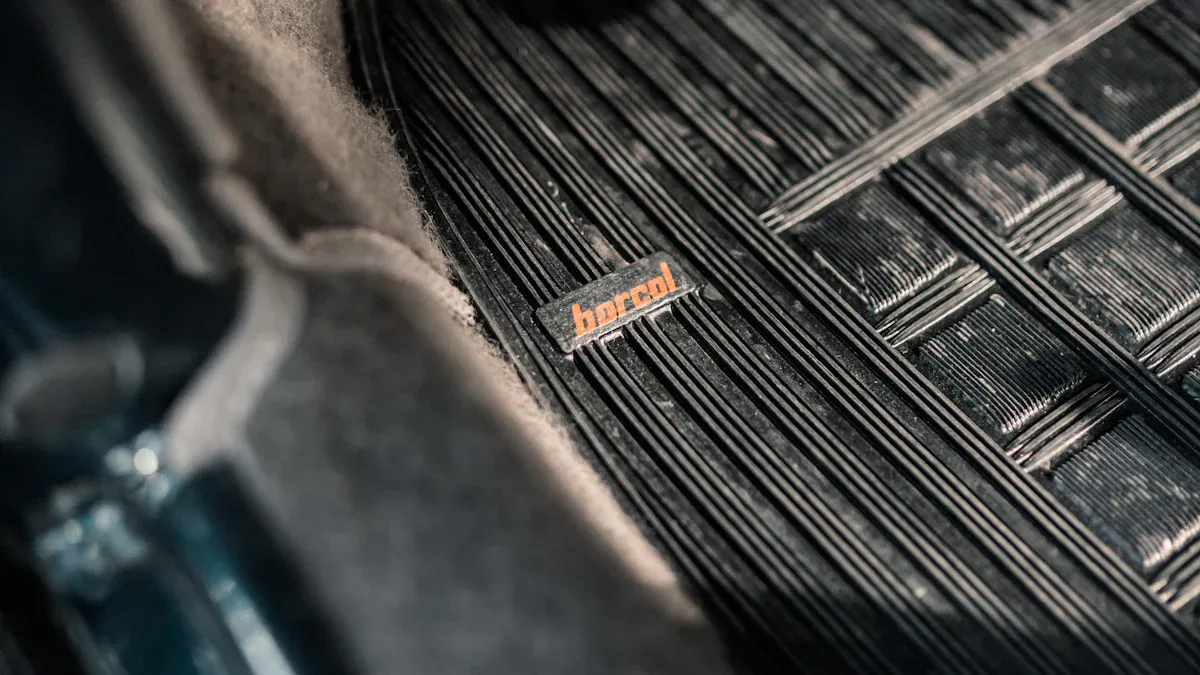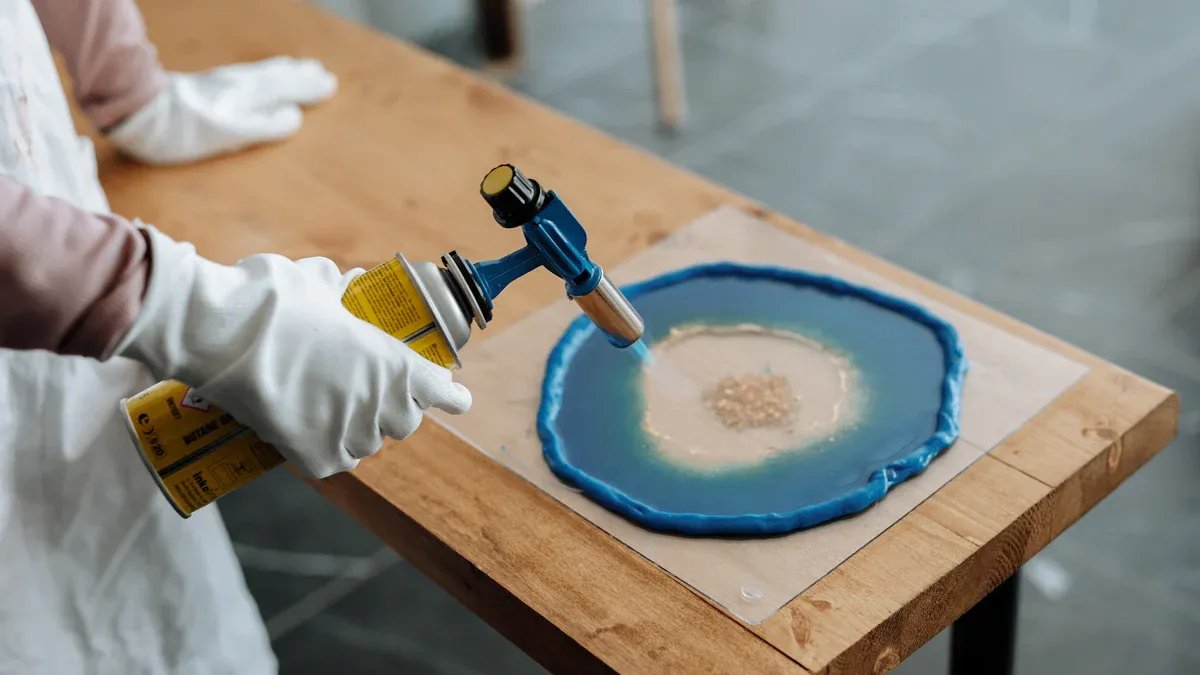

Engineers pick advanced polymer resin formulations to fix hard problems in new projects. Materials such as PEKK, PEEK, PVDF, and fiber-reinforced polymers have strong chemical resistance. They also have low gas permeability. These polymers help protect aerospace parts. They also help with accuracy in 3D printing. Their structure makes them strong and tough. Engineers use these resins to make dependable parts for high-performance fields.
Polymer Resin Innovations
Chemical Resistance Advances
Engineers want materials that can handle strong chemicals. Polymer resin technology has improved a lot. New formulas help parts last longer in tough places. These places include chemical plants and aerospace systems. These resins block acids, fuels, and solvents. They keep equipment safe and working well.
Tip: Chemical resistance helps save money on repairs. It also helps equipment work longer in factories.
Some polymer resin types have special additives. These additives make the resin stronger against chemicals. Resin curing is important too. When resin cures well, it forms a tight network. This network stops chemicals from getting through. Epoxy coating is another way to protect surfaces. It adds a layer that shields metal and plastic parts from harm.
Gas Permeability Reduction
Gas can leak through some materials. This causes trouble in fuel tanks, pipes, and molds. Polymer resin scientists found ways to lower gas leaks. They use dense structures and fillers. These changes keep gases from passing through.
Fiber-reinforced polymers help as well. They have strong fibers inside the resin. These fibers block gas movement. Engineers pick these materials for aerospace and factories. They want parts that stay strong and keep gases inside.
Note: Lower gas leaks mean safer and better equipment.
Structural Adhesives
Strong adhesives hold parts together in many projects. Polymer resin adhesives now have better strength and last longer. They stick metals, plastics, and composites together. These adhesives work where bolts or welds cannot.
Resin curing matters for adhesives. A good cure makes the bond tough and long-lasting. Some adhesives use epoxy coating for extra grip. Others use fiber-reinforced polymers for more support. Engineers use these adhesives in casting and aerospace assembly. They trust the bonds to stay strong under stress.
- Polymer resin adhesives help build lighter and stronger products.
- They resist chemicals and heat.
- They help new designs in factories.
Advanced Polymer Materials

PEKK and PEEK
PEKK and PEEK are important in engineering. They are very strong and tough. Engineers use them in cars and planes. PEKK can handle heat and chemicals. PEEK stays in shape even with heavy weight. Both help make parts with exact sizes. They also make surfaces smooth.
Tip: PEKK and PEEK work where metal might break. They last long and need less fixing.
Resin curing makes PEKK and PEEK stronger. When curing ends, parts get harder and better. Engineers trust these for important pieces. They use them to make gears and valves in factories.
PVDF
PVDF is a special polymer resin. It does not get ruined by acids or bases. Engineers use PVDF for pipes and tanks. PVDF does not break down fast. It also stops gases from leaking out. This helps in chemical plants.
PVDF works well with epoxy coating. The coating gives more protection. It helps PVDF last longer in tough places. Engineers use PVDF where safety is very important.
- PVDF helps keep water clean.
- It keeps chemicals inside tanks.
- It is used for pumps and filters in factories.
Fiber-Reinforced Polymers (FRPs)
Fiber-reinforced polymers (FRPs) mix strong fibers with resin. The fibers can be glass, carbon, or aramid. FRPs are strong but not heavy. Engineers use FRPs in bridges, planes, and cars.
Note: FRPs help make things lighter but still strong.
Resin curing makes FRPs tough and steady. Curing locks the fibers in place. FRPs also work with epoxy coating. The coating keeps the surface safe from harm. Engineers pick FRPs for exact casting and big parts. FRPs help new designs in factories.
- FRPs do not rust.
- They last longer than many metals.
- They help make safer and better products.
Performance Benefits
Durability
Engineers want materials that last a long time. Polymer resin helps parts stay strong in tough places. Factories use resin curing to make products harder. This process makes the resin solid and tough. Epoxy coating helps surfaces avoid scratches and damage. These steps keep equipment safe in factories.
Tip: Durable materials help save money on repairs. They also help machines work longer.
Bridges and airplanes use these resins for more strength. The resin does not crack or break easily. It can hold heavy loads and handle bad weather. Engineers trust these materials for big jobs.
Lightweight Design
Many companies want products that are not heavy. Polymer resin gives good support but does not add much weight. Engineers use fiber-reinforced polymers to make cars and planes faster. Lighter parts help save fuel and make machines easier to use.
- Lightweight materials help with making exact shapes.
- Workers can lift and put parts in place faster.
- Products that weigh less cost less to ship.
Factories use these resins to make new shapes. They can build thin walls that still stay strong. This helps with new designs in factories.
Corrosion Resistance
Corrosion can damage metal parts. Polymer resin protects against rust and chemical harm. Engineers use epoxy coating to keep water and acids away. This keeps tanks, pipes, and pumps safe in chemical plants.
Note: Corrosion resistance helps keep equipment safe and stops leaks.
Resin curing makes the protection even better. Engineers use these materials where metal would not last. They use them in bridges, factories, and water systems. The resin helps equipment work for many years.
Polymer Resin Applications


Aerospace Components
Engineers use polymer resin to make airplane parts strong and light. These materials help wings and panels stay tough in the air. Resin curing makes each part harder and more dependable. Epoxy coating keeps surfaces safe from rain and heat. It also protects against chemicals.
Tip: Airplanes need parts that do not rust or break. Polymer resin helps keep everyone safe.
Fiber-reinforced polymers are important in airplanes too. They add strength but do not make the plane heavy. Precision casting lets engineers shape parts to fit just right. This helps planes fly better and last longer.
3D Printing
3D printing uses polymer resin to make detailed models and parts. The resin cures fast under light, so shapes form quickly. Engineers choose special resins for gears and tools. They also use them for medical devices.
- 3D printers use resin curing for smooth surfaces.
- Epoxy coating gives extra protection to printed things.
Precision casting in 3D printing helps make parts with exact sizes. This method helps new designs in many areas. Engineers like polymer resin because it is easy to use and strong.
Industrial Uses
Factories use polymer resin for pumps, tanks, and pipes. These materials stand up to acids and water, so equipment lasts longer. Epoxy coating keeps surfaces safe from harm.
Note: Factories need parts that work well every day.
Resin curing makes each product solid and strong. Precision casting shapes parts for machines and tools. Engineers use polymer resin to make items that handle heat and chemicals. These materials help factories work safely and smoothly.
Collaborative Development
Industry Partnerships
Many companies join together to make polymer resin better. These teams share ideas and move faster. Engineers from many jobs work as a group. They try to fix hard problems. For example, a car company might work with a chemical company. They test new resins to make car parts stronger. This teamwork helps everyone learn more quickly. Industry partnerships help with big projects too. Airplane makers need special materials for their planes. They work with resin experts to make strong and light parts. These groups test how resins handle heat and pressure. They also check how resins react to chemicals. They use resin curing and epoxy coating to keep parts safe. When companies share what they know, they make better products for all.
Tip: Working together helps companies use the best skills and tools from each partner.
Custom Formulations
Each project needs something different. Some need parts that can take heat. Others need materials that stay strong in water. Custom formulations help meet these needs. Scientists change the mix in the polymer resin. They add fillers or fibers to make it stronger. This helps make parts that fit each job. Custom formulations give companies a big edge. They can make products that last longer or weigh less. In factories, custom resins help build better machines. Precision casting uses these mixes to shape exact parts. When a company uses a custom resin, it can be different from others.
Note: Custom formulations help companies fix special problems and stay ahead in the market.
Future Trends
Sustainability
Many engineers want to help the planet. They pick polymer resin that uses less energy. Some companies recycle old resin to make new things. This saves resources and cuts down on waste.
Tip: Using recycled stuff helps the earth and saves money.
Factories use resin curing that needs less heat. This saves power and makes work safer. Epoxy coating lasts longer, so products need fewer replacements. These steps help lower pollution in factories.
Smart Polymers
Smart polymers change when they feel heat or light. Engineers use them in medical devices and sensors. For example, a smart polymer bends when it gets warm. This helps make new tools for doctors and scientists.
Precision casting with smart polymers makes parts that react. These materials help machines work better and safer.
- Smart polymers can fix themselves if they break.
- They can change shape for different jobs.
Advanced Manufacturing
Factories use new ways to make things faster and better. Industrial manufacturing uses robots and computers to shape polymer resin. This helps workers make exact parts each time.
Resin curing is quick with new machines. Epoxy coating protects parts while they are made. Engineers use precision casting to build strong and light items.
Note: Advanced manufacturing helps companies make more things with less waste.
These trends show how engineers keep making materials and methods better. They help make safer, cleaner, and smarter products for the future.
Polymer resin keeps making engineering projects better. Engineers notice it helps parts last longer. It also makes things lighter and stops rust.
- Resin curing and epoxy coating make parts stronger.
- Factories and precision casting build tough products for many jobs.
Learning about new polymer resin ideas helps teams fix problems. Working together and trying new things brings better answers for future projects.

